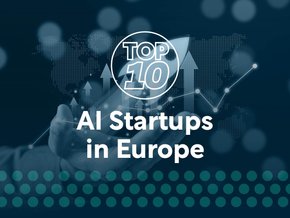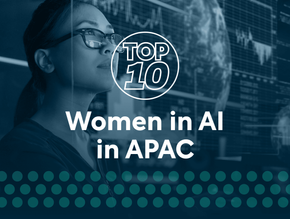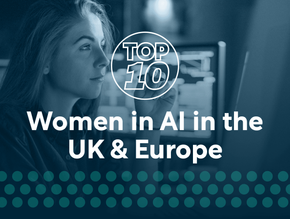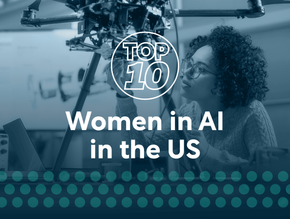Top 10: Resources to bridge the skills gap
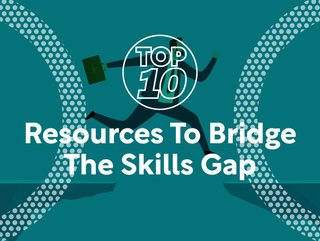
The skills gap, the difference between the skills employers need and the skills workers possess, has been a growing concern for a number of years, heightened by the coronavirus pandemic which transformed the way society works.
Technological advancements are continuing to rapidly change our work lives, demanding that current and future generations adapt to a digital world and acquire the necessary digital skills to remain competitive. Failure to do so could leave them without the qualifications needed for a wide range of jobs.
AI Magazine takes a look at some of the resources available today that organisations could implement into business practices, in order to bridge and address the skills gap.
10. No-code/Low-code AI
Low-code/no-code (LC/NC) development methods have emerged as a game-changer by eliminating the need for extensive programming expertise and instead relying on intuitive graphical tools and visual modelling techniques. A study by IDC has revealed that 24% of IT executives consider LC/NC to be a significant factor in accelerating and simplifying the implementation of custom business processes. This transformative impact has propelled LC/NC to the forefront of IT trends.
9. Personalised recommendations
Armed with a wealth of data, AI can accurately create learning journeys tailored to each individual's skill set and career aspirations. By providing a comprehensive repository of courses, materials, and resources, AI will generate personalised recommendations that ensure optimal training outcomes and effectively address organisational skill gaps. Additionally, machine learning (ML) technologies can continuously monitor employee performance, gleaning valuable insights into their learning progress.
8. Develop a regional/national skills forum to improve information sharing
Sharing skills development information across regions and countries is crucial towards addressing youth unemployment, as skills become rapidly obsolete. Collaboration among employers, educators, government officials, and professional associations is essential to address job market trends, identify skill gaps, and support youth development programmes. A prime example is Bangladesh’s National Intelligence for Skills, Education, Employment & Entrepreneurship (NISE3) which gathers government stakeholders, skills service providers, industry associations, industry leaders, and others to facilitate information and data sharing around skill development.
7. Real-time coaching and feedback
An AI-powered coach serves as an invaluable asset in the field of on-the-job learning, providing immediate and personalised support to learners as they navigate the complexities of their work. Unlike traditional training methods that often operate in isolation from the actual work environment, AI coaches are embedded within the workflow, offering real-time guidance and feedback that seamlessly integrates into the day-to-day activities of employees. Additionally, AI-powered analytics give learners a clear image of their learning progress and motivate them to bridge their skill gaps.
6. Monitor the progress of training programmes
The effectiveness of employee training depends on an organisation's capacity to track progress and make the necessary adjustments. AI can significantly enhance this process by continuously analysing the impact of skill development initiatives on employee performance. By generating insightful reports, AI enables business leaders to refine training strategies and achieve desired outcomes. Furthermore, AI can integrate this data with industry trend forecasts, identifying skills that will become increasingly crucial in the future.
5. Shift the focus from institutions to individuals
In today's ever-evolving workplace, possessing a broad range of skills is no longer a mere advantage but a necessity for success. While traditional educational approaches have often focused on imparting specialised knowledge and narrow skill sets, the modern workforce demands a more holistic approach. Education and training objectives should encourage individuals to develop a broader mix of skills, rather than producing only a certain number of graduates from specific courses.
4. Conduct AI-driven skill gap analysis
When the skill requirements for each employee have been established, the next step is to identify any existing skill gaps or areas that need improvement. AI can expedite this process by extracting and analysing vast amounts of data from an organisation's digitised records, encompassing employee performance metrics, training records, and feedback. If additional data is required, AI can also be used to deploy assessment tools to evaluate individual skill levels, which will result in detailed reports on both individual and collective skill gaps within an organisation.
3. Support the change process
While equipping employees with AI skills is crucial, facilitating and supporting their adoption into the ever-changing work environment is equally important. Companies must openly communicate the reasons behind the implementation, clearly outline the expectations, and provide a structured transition period to minimise uncertainty and promote a smooth adaptation process. While implementing AI may seem daunting at first, it should be seen as a tool to augment human intelligence, and not to replace people and jobs.
2. Identify the required skills missing
The first step in identifying skill gaps within an organisation lies in defining its precise needs. Given that organisations can comprise hundreds or even thousands of employees with diverse job roles and responsibilities, pinpointing the exact skills required for each position can be a daunting task.
This complexity is further made up by the existence of various skill types, including soft skills, technical skills, and industry-specific expertise. AI, with its powerful data analysis capabilities, can effectively bridge this gap by examining an organisation's employee data, aligning it with its services and overarching goals, and promptly generating a comprehensive overview of the specific skills needed for each position.
1. Expand and improve on skilling programmes
In today’s modern world, businesses and individuals alike can't afford to miss out on the many benefits of AI training, which can result in employees becoming more skilled, productive, and knowledgeable, by helping them understand the technology itself and its potential. Through this, employees can begin to close the skills gap.
One such organisation at the forefront of this innovation is global leader Microsoft, which is expanding its UK skilling programme, called Get On, with the goal of helping 2.5 million individuals gain access to the skills required for today’s AI landscape. As well as this, Avado and BT Group have announced a new series of FastFutures programmes to support 2,000 young adults from diverse and under-represented backgrounds in gaining critical employment skills as they transition from education to employment.
******
For more insights into the world of AI - check out the latest edition of AI Magazine and be sure to follow us on LinkedIn & Twitter.
Other magazines that may be of interest - Technology Magazine | Cyber Magazine.
Please also check out our upcoming event - Net Zero LIVE on 6 and 7 March 2024.
******
BizClik is a global provider of B2B digital media platforms that cover Executive Communities for CEOs, CFOs, CMOs, Sustainability leaders, Procurement & Supply Chain leaders, Technology & AI leaders, Cyber leaders, FinTech & InsurTech leaders as well as covering industries such as Manufacturing, Mining, Energy, EV, Construction, Healthcare and Food.
BizClik – based in London, Dubai, and New York – offers services such as content creation, advertising & sponsorship solutions, webinars & events.

